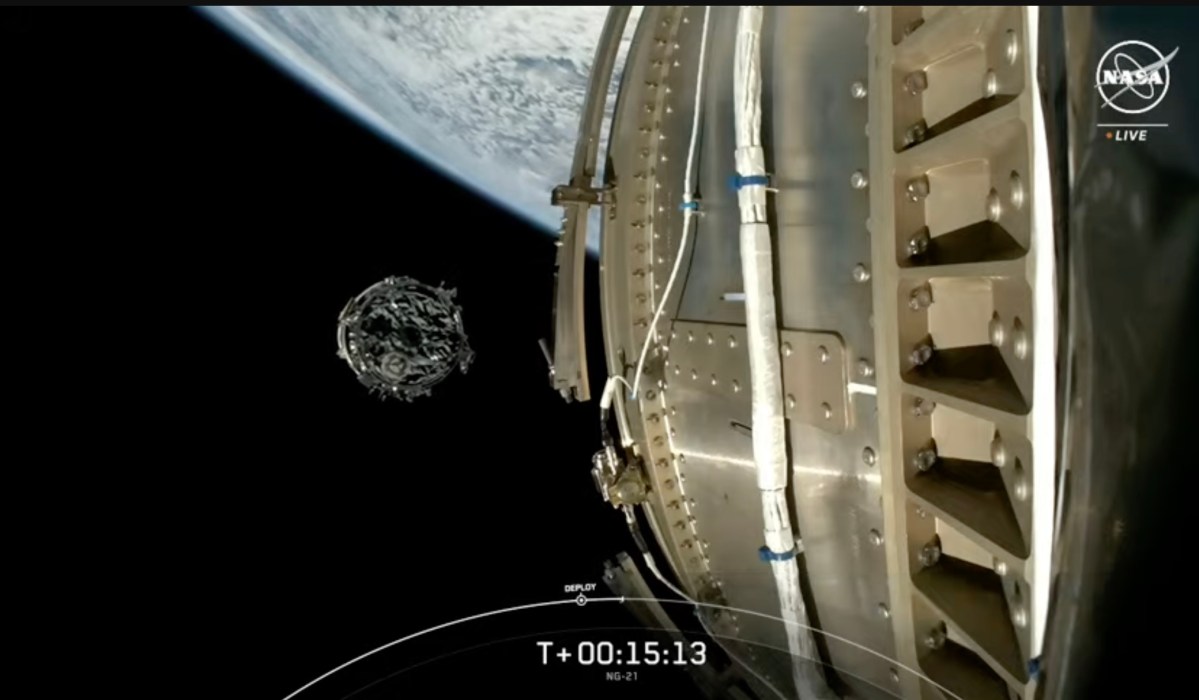LOGAN, Utah — A Falcon 9 launched a Northrop Grumman Cygnus cargo spacecraft to the International Space Station Aug. 4, but the spacecraft suffered problems that have delayed maneuvers needed to reach the station.
A Falcon 9 lifted off from Space Launch Complex 40 at Cape Canaveral, Florida, at 11:02 a.m. Eastern. The launch appeared to go as planned, with the Cygnus spacecraft separating from the Falcon’s upper stage in low Earth orbit nearly 15 minutes after liftoff. The liftoff, delayed a day because of poor weather, dodged the effects of Tropical Storm Debby to the west that, at one point, offered only a 10% chance of acceptable weather for the launch.
There were no updates from NASA or Northrop Grumman after spacecraft separation for several hours. However, communications between ISS astronauts and mission control indicated that the spacecraft had not performed initial burns to raise its orbit to enable an arrival at the station early Aug. 6.
In a NASA statement issued nearly six hours after liftoff, the agency said that the spacecraft failed to perform a maneuver called targeted altitude burn, or TB1, 42 minutes after liftoff “due to a late entry to burn sequencing.” The burn was rescheduled for 50 minutes later, but also did not take place because of a “slightly low initial pressure state” in the engine.
“Cygnus is at a safe altitude, and Northrop Grumman engineers are working a new burn and trajectory plan,” NASA stated, adding that the plan should still allow Cygnus to arrive for a capture by the station’s robotic arm at 3:10 a.m. Eastern Aug. 6. NASA added that solar array deployment was completed about three hours after liftoff, as expected.
The Cygnus is carrying 3,857 kilograms of cargo, including 1,560 kilograms of vehicle hardware, 1,220 kilograms of science investigations and 1,021 kilograms of crew supplies. The hardware included “critical spares and new hardware items,” said Bill Spetch, NASA ISS operations integration manager, at an Aug. 2 briefing, ranging from a spare pump assembly for a urine processing system to a modification kit that will be used for the installation of the final ISS Roll Out Solar Array on the station in 2025.
The science payloads include experiments studying how spaceflight affects DNA in microscopic organisms and a study of stem cells that could be used to treat blood diseases. Also on board is what Meghan Everett, NASA ISS deputy chief scientist, described at the briefing as a “STEMonstration” or education experiment to demonstrate centripetal force using items in balloons.
Crew supplies include some items for astronauts Butch Wilmore and Suni Williams, who have been on the station nearly two months on the CST-100 Starliner Crew Flight Test mission. “We do like to keep our options open,” said Spetch, a reference to the uncertain return date for the mission. That includes clothes that were taken off Starliner just before launch to make room for spare parts for the station’s urine processor assembly. “We have some clothes, we have some personal food items for them, thanks like that.”
What is not on Cygnus, though, are Crew Dragon pressure suits for Williams and Wilmore, amid speculation that NASA is considering having the two astronauts return home on Crew Dragon rather than Starliner. “We would have to deal with that later,” he said.
The launch was the second of three Falcon 9 missions that Northrop Grumman procured for Cygnus launches while it works with Firefly Aerospace on a new version of its Antares rocket, the Antares 330. That version replaces the Ukrainian-built first stage and Russian engines with a stage developed by Firefly and powered by its Miranda engines.
Ryan Tintner, vice president of civil space systems at Northrop Grumman, hedged on the call when asked if the new Antares will be ready to handle Cygnus missions after the Falcon 9 launch of the NG-22 mission, currently projected for the spring of 2025. “I don’t think I can give specific timelines” about the readiness of Antares, he said. “That is progressing as planned here and we’re on track.”
“Cygnus is launch-vehicle agnostic,” he added. “We will continue to work with NASA and determine the right launch vehicle after that.”
